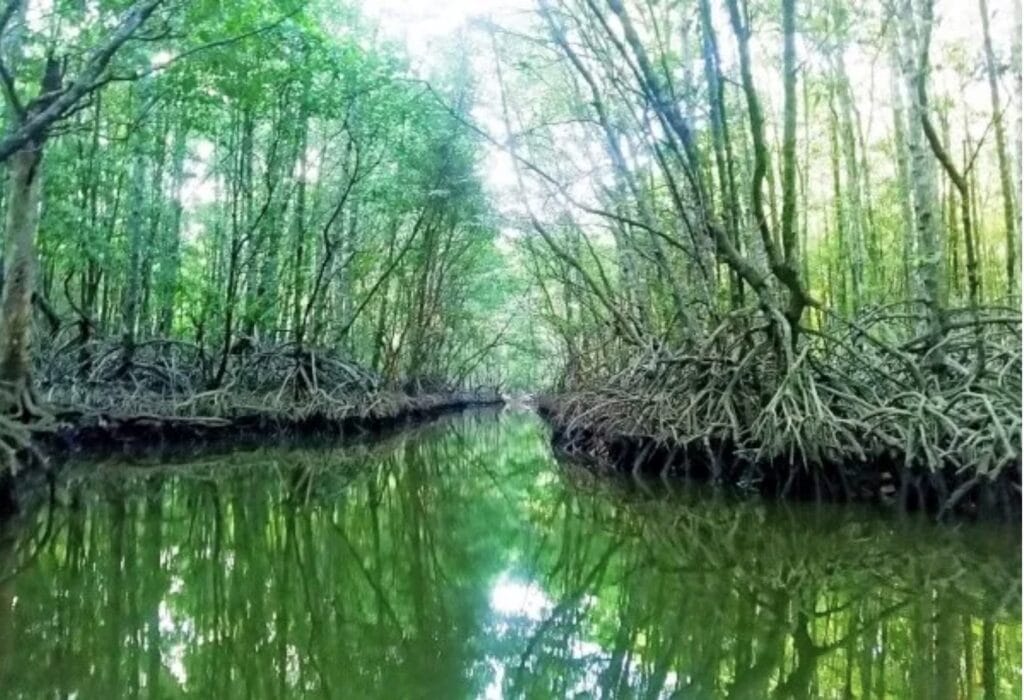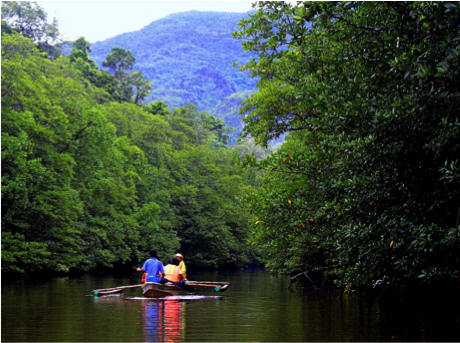Exploring the mangrove forests of Palawan offers a fascinating glimpse into one of the most ecologically diverse and vital ecosystems on Earth. These coastal forests play a critical role in protecting shorelines from erosion, supporting rich biodiversity, and serving as a vital nursery for marine life.

As you navigate through the dense network of mangrove roots and waterways, you’ll be immersed in a world teeming with unique wildlife, from colorful birds to vibrant marine species. The intertwining roots create a natural haven for small fish, crabs, and other creatures, while also filtering water and acting as carbon sinks, contributing to climate regulation. The experience is not only visually stunning but also deeply educational, providing insight into the delicate balance of nature and the importance of conservation efforts. Whether you’re gliding through the serene waters by boat or trekking along elevated walkways, each moment offers a connection to nature and a deeper appreciation for the critical role these forests play in maintaining the health of our planet. Palawan’s mangroves are a testament to the beauty and resilience of nature, offering an unforgettable experience for anyone passionate about ecology and the environment.
Mangroves are vital ecosystems that play an essential role in supporting marine life, protecting coastlines, and maintaining environmental balance. These unique coastal forests serve as nurseries for many species of fish, crabs, and shrimp, providing a safe habitat for young marine life to grow and thrive. By stabilizing sediments with their extensive root systems, mangroves prevent coastal erosion and reduce the impact of storms, acting as natural barriers that protect shorelines from strong winds, waves, and flooding.
Additionally, mangroves are effective carbon sinks, absorbing and storing large amounts of carbon dioxide, which helps in mitigating climate change. Their ability to filter pollutants from the water further contributes to improving water quality and maintaining the health of nearby coral reefs and seagrass beds. Mangroves also support a rich diversity of wildlife, from birds and reptiles to a variety of fish species, making them critical for biodiversity conservation.
By safeguarding coastal regions and fostering marine ecosystems, mangroves help sustain livelihoods for millions of people around the world, particularly in tropical and subtropical regions. Their preservation is essential for maintaining the balance of coastal and marine environments and ensuring long-term ecological stability

Here’s a detailed description of the experience of exploring Palawan‘s mangrove forests:
Entering the Mangrove Canopies:
- The adventure often begins by navigating water channels that wind through dense mangrove canopies.
- The towering mangrove trees with their prop roots create a natural tunnel, providing a unique and immersive environment.
Biodiversity in Mangrove Ecosystems:
- Palawan’s mangrove forests are hotspots of biodiversity, housing a variety of plant and animal species.
- The mangroves serve as nurseries for juvenile fish, crabs, and other marine organisms, contributing to the health of coastal ecosystems.
Mangrove Tree Varieties:
- Palawan’s mangrove forests boast diverse species of mangrove trees, including Rhizophora, Avicennia, and Sonneratia.
- Each species has distinct adaptations to the intertidal zone, showcasing the resilience of these trees in challenging coastal environments.
Wildlife Encounters:
- As you paddle or cruise through the mangrove channels, keep an eye out for wildlife.
- Birds like kingfishers, egrets, and herons are commonly seen, while mudskippers and fiddler crabs may be spotted along the muddy shores.
Educational Tours and Guided Walks:
- Guided tours with knowledgeable local guides provide insights into the ecological importance of mangrove ecosystems.
- Educational walks may take you along elevated wooden boardwalks or trails, allowing you to observe the mangroves up close without disturbing the delicate ecosystem.
Mangrove Conservation Initiatives:
- Some areas may have mangrove conservation initiatives, emphasizing the importance of protecting and preserving these vital ecosystems.
- These initiatives may include community-based projects, reforestation efforts, and educational programs.
Demonstration of Mangrove Functions:
- Guides often demonstrate the unique functions of mangroves, such as the ability of prop roots to filter sediments and nutrients from the water.
- Explanations about the role of mangroves in providing habitat, preventing erosion, and acting as a buffer against storm surges enhance the educational experience.
Mangrove Nursery Areas:
- Some mangrove forests may have designated nursery areas where young mangrove saplings are cultivated.
- Understanding the life cycle of mangroves, from seed germination to mature trees, adds depth to the exploration.
Photography Opportunities:
- The picturesque landscapes of Palawan’s mangrove forests offer numerous opportunities for photography.
- Capture the interplay of light and shadows, reflections on the water, and the intricate network of mangrove roots.
Floating Forests and Submerged Roots:
- Witness the phenomenon of “floating forests” where mangrove trees seem to rise from the water on stilt-like roots.
- The intricate network of submerged roots provides a complex habitat for various marine organisms.
Sunset or Sunrise Tours:
- Consider embarking on a sunset or sunrise tour for a magical experience in the mangrove forests.
- The changing colors of the sky, reflected in the tranquil waters, create a serene and unforgettable atmosphere.
Conservation Challenges and Solutions:
- Gain insights into the challenges faced by mangrove ecosystems, such as habitat loss and degradation.
- Learn about ongoing conservation efforts and the importance of sustainable practices to ensure the long-term health of these vital coastal habitats.
Exploring Palawan’s mangrove forests is not just a journey into a natural wonder; it’s an opportunity to appreciate the intricate balance of life and ecosystems. The experience offers a heightened awareness of the ecological services provided by mangroves and underscores the need for conservation efforts to protect these valuable coastal treasures.

